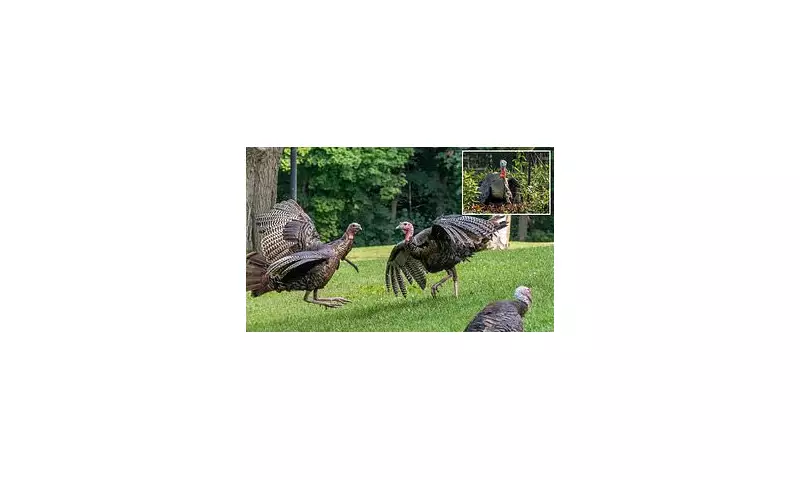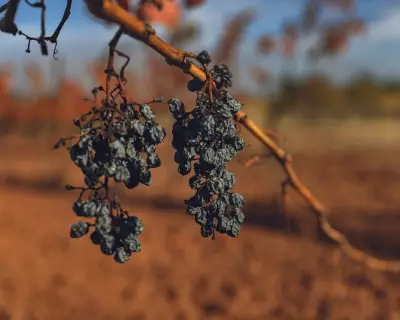
While most people associate turkeys with November feasts, the real drama for these remarkable birds unfolds each spring when breeding season transforms woodlands into intricate social theatres filled with high-stakes courtship rituals.
The Spring Transformation
During the spring breeding season, male turkeys - known as toms - display an extraordinary array of physical traits and behaviours to attract females. Their elaborate displays include resonant gobbling calls, magnificently fanned tails, sharp leg spurs, distinctive hair-like chest beards, and the elongated fleshy snood that drapes over their beaks.
Research has revealed that among these many features, the snood plays a particularly crucial role in female choice. Studies by Dr Richard Buchholz of the University of Mississippi demonstrate that longer snoods correlate strongly with better health and fewer parasites, making them a key indicator of male quality.
Complex Mating Strategies
Turkey hens prove to be highly selective mates, carefully evaluating combinations of plumage quality, snood length, vocal performance, and dominance signals before choosing partners. They typically remain aloof until specific hormonal and daylight triggers prompt receptivity, creating a dynamic and unpredictable mating environment.
Unlike most bird species, turkey hens raise their young completely independently, incubating eggs alone and leading remarkably self-sufficient poults from the nest within just 24 hours of hatching. Meanwhile, males focus exclusively on mating activities throughout the season.
Brotherhoods and Wingmen
Dominance hierarchies fundamentally determine breeding success, with top-ranking toms monopolising access to females while subordinate males either seek alternative opportunities or assist relatives as cooperative 'wingmen'. These male teams, usually composed of brothers, represent a rare example of kin selection among birds.
Biologist Alan Krakauer describes the turkey mating system as a unique blend of several breeding strategies. 'Like sage-grouse, prairie chickens, or other lek-breeding birds, spring groups of turkeys can contain multiple males and multiple females all interacting with each other,' he explained in a blog post. 'And yet, similar to true harem birds like Ring-necked Pheasants, fertile females walk around in groups and males try to guard these groups and keep other males away.'
DNA analysis has confirmed that wingmen are typically brothers or close kin, allowing them to spread shared genetic material indirectly even if they never mate themselves. 'The insight from kin selection is that when one relative helps another reproduce more than they otherwise would, then they are indirectly passing on some of their own genes,' Krakauer noted.
Courtship unfolds over several weeks, beginning with distant gobbles and progressing to elaborate visual displays featuring fanned tails, wing dragging, and prolonged mounting rituals. Every stage demands physical prowess, social intelligence, and strategic positioning within the flock.
Large winter flocks fragment in early spring as females disperse to nest, creating fluctuating availability of receptive hens that forces males to constantly adapt their strategies. Some female groups attract multiple competing toms simultaneously, while others leave males roaming extensively for opportunities.
Broods typically contain eight to twelve eggs, often comprising full siblings, half-siblings, and occasionally unrelated chicks due to brood parasitism. Over time, juvenile males gravitate toward adult males, forming fraternal bands that can persist for years.
Power within these male teams is maintained through ritualised contests of strength including shoving, kicking, and wing strikes, with dominance hierarchies being reassessed each new season.
Far from the simple or clumsy birds of popular imagination, wild turkeys demonstrate a sophisticated social and reproductive world where visual displays, complex vocalisations, cooperative brotherhoods, and intense competition converge. Their mating strategies, marked by high stakes and intricate behaviours, continue to fascinate researchers and offer profound insight into one of North America's most complex avian social systems.





